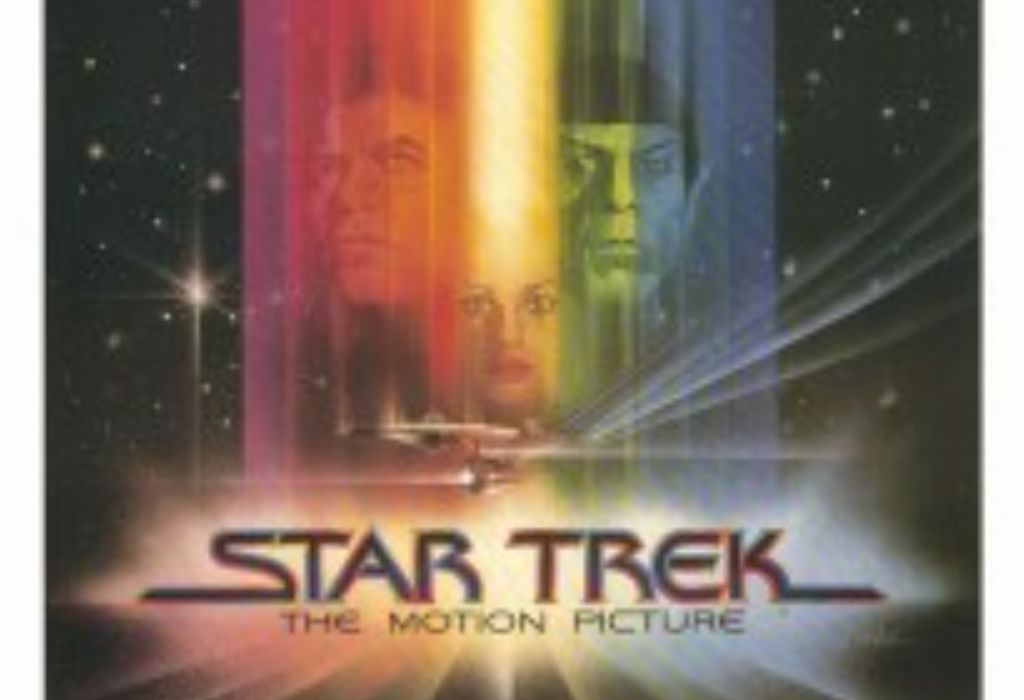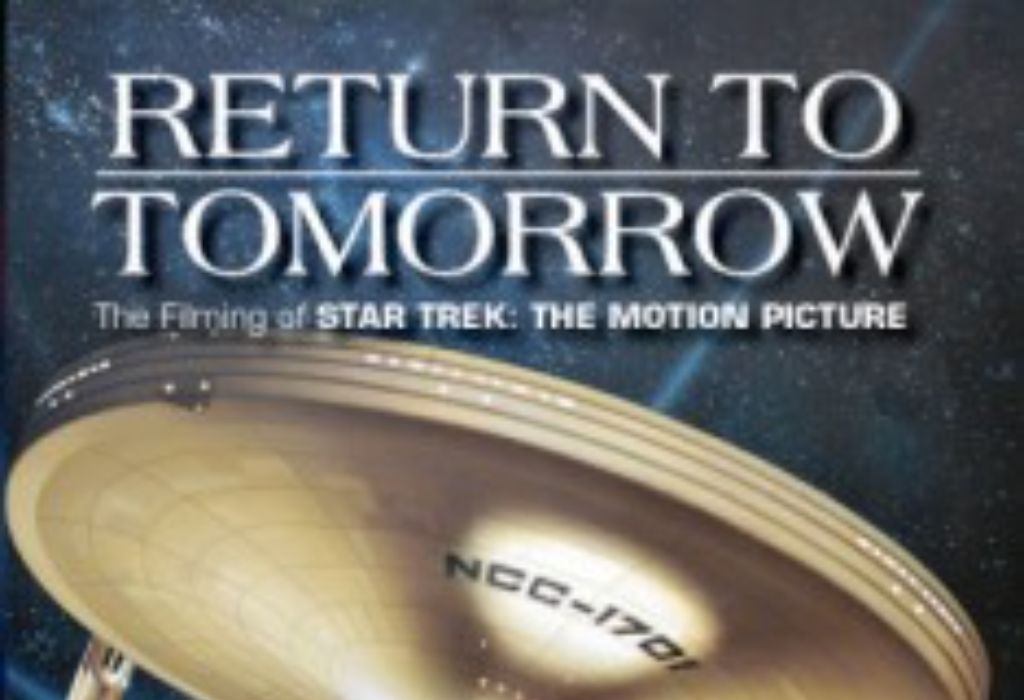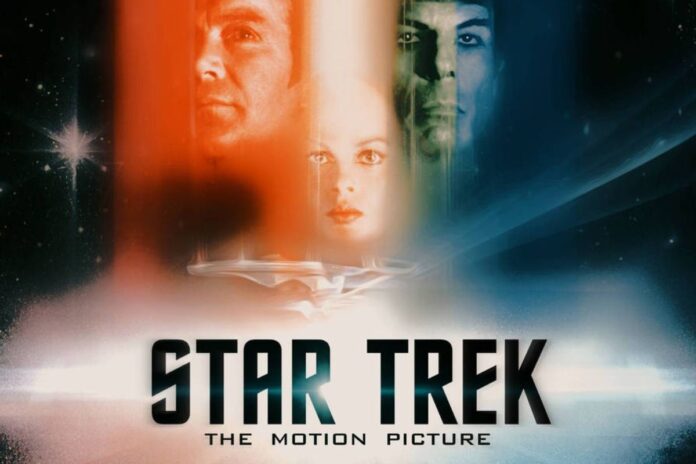Embark on a cinematic odyssey with “Return to Tomorrow,” unraveling the captivating creation of Star Trek’s epic journey.
Return to Tomorrow: Making ‘Star Trek: The Motion Picture’ (1979)” provides an in-depth exploration of the behind-the-scenes journey in bringing the iconic science fiction film to life.
This documentary delves into the challenges, creative decisions, and the collaborative efforts of the cast and crew.
It offers fans a fascinating glimpse into the making of a cinematic milestone, shedding light on the intricate process of transforming the beloved “Star Trek” television series into a feature film.
Return to Tomorrow: Making “Star Trek: The Motion Picture” (1979)
Even for those not deeply immersed in Star Trek, the tumultuous production, release, and reception of Star Trek: The Motion Picture (1979) stand out as a unique chapter in Hollywood history.
Remarkably, it marked the first attempt to adapt a supposedly unsuccessful TV series into a high-budget movie, one abruptly canceled almost a decade earlier.
The project endured a protracted journey through developmental challenges, initially planned as a mid-budget theatrical feature, then reimagined as a television series before ultimately transforming into a lavish motion picture after the success of Star Wars (1977).
This transformative process spanned over three years, involving the creation of teleplays, casting actors for the unrealized TV version, and even constructing sets and models, many of which were either discarded or extensively modified when Star Trek evolved into a big-budget film.

A pact between Paramount and theater owners set the movie’s release date: December 7, 1979, forcing filming to start with an incomplete shooting script. Unforeseen technical issues and script discussions prolonged the delays.
An even more significant challenge arose regarding Star Trek’s special visual effects.
Paramount engaged Abel & Associates, which is known for TV commercials but needs more feature film experience. They produced no usable footage despite investing $6 million and 12 months.
Effects veteran Douglas Trumbull assumed control, and John Dykstra’s Apogee Co. joined to manage the workload, with just nine months to complete two years’ worth of visual effects.
This entire process—years of script development, wasted resources on sets, models, and talent for the unrealized TV series, live-action unit delays.
Millions squandered by Abel & Associates, and the monumental effort to finish special effects for the film’s release—escalated Star Trek’s final cost to $42 million (possibly more), ranking it among the four or five most expensive movies at the time.
The tight schedule left no time for film previews, editing fine-tuning, or creating premium 70mm prints for major theaters; Paramount was uncertain if prints would reach theaters on time.
The complex and enthralling narrative unfolds extensively in Preston Neal Jones’s “Return to Tomorrow: The Filming of Star Trek: The Motion Picture,” published by Creature Features Publishing.
The book’s history is equally intricate, tracing back to 1979. Jones conducted comprehensive interviews with the entire principal cast, Star Trek creator Gene Roddenberry, director Robert Wise, and nearly all other key production personnel—around 60 interview subjects.
Initially intended for a cover story in Cinefantastique, the renowned science fiction-fantasy-horror cinema magazine, it remained unpublished.
The book, now a colossal 672-page oral history, provides a fascinating window into the challenges and experiences during the film’s creation, capturing the sentiments of interviewees around its release in December-January 1979/80.
Despite candid expressions of displeasure and frustration, most interviewees reflect positively on the demanding experience.
Jones’s meticulous attention to even the minutest details in “Return to Tomorrow” vividly portrays the extensive and arduous process of studio moviemaking, making it a standout in film literature.

The book resembles the meticulous examination of dusty cardboard boxes filled with unprocessed research materials. Its primary flaw lies in the constant repetition of nearly identical comments.
In his brief Afterword, even Lukas Kendall playfully acknowledges this by jesting about the unanimous admiration for Robert Wise.
Approximately 50 of the 60 contributors express sentiments like, “Without Robert Wise’s filmmaking expertise and perpetual composure, the entire project would have collapsed.”
Furthermore, roughly half of these contributors reiterate the same sentiments multiple times, with instances of redundant statements from individuals like actor DeForest Kelley and members of the special effects team.
The narrative of the making of Star Trek: The Motion Picture is inherently captivating, filled with frequent setbacks and suspenseful moments.
However, reading Return to Tomorrow feels akin to witnessing the Indy 500 in agonizing slow motion, with the racecars sluggishly progressing at 20 mph.
The book needs a discernible sense of pacing or storytelling. The pivotal moment when the typically unflappable Robert Wise finally expresses frustration after viewing Abel’s insufficiently completed effects shots receives minimal anticipation.
When this crucial turning point in production does occur, it is casually relegated to the literary background, tossed in with the rest of the details, and given equal or perhaps even less emphasis than the exhaustive coverage of the creation of warp coil lighting effects.
Despite sporadic bits of connecting material, Return to Tomorrow seldom contextualizes the production of Star Trek.
Paramount’s objectives and long-term strategies for Star Trek about the broader company or its role in Hollywood’s frantic attempt to replicate Star Wars’s success from 1978 to 1984 receive minimal attention.
There needs to be more information about other Paramount films concurrently in development or production and more discussion about the overall state of the film industry in the late 1970s.
These elements would have enhanced the understanding of Star Trek’s place.
Primarily an oral history, the author’s voice could be more present, lacking the perspective of 35 years of hindsight, reflection, and analysis.
While it might have been a tough sell to non-Star Trek enthusiasts, the work predominantly caters to hardcore fans, which is unfortunate.
With the guidance of a skilled editor and substantial pruning (around 75%), the book could have retained essential content while evolving into an insightful and compelling piece.
It could offer new perspectives on tumultuous production and serve as a notable case study on studio production and the intersection of art and commerce during a pivotal industry period.
Return to Tomorrow downplays or barely mentions the remarkable achievements of The Motion Picture beyond narrowly meeting its release deadline.
Despite its flaws, the inaugural Star Trek movie accomplished much that went largely unnoticed then.
In hindsight, the film resonates more positively than it did during its initial release. Thereit has been quite different from it, either before or since.
Firstly, the movie faced the daunting task of reinventing itself while navigating a complex web of contradictions.
Striking a delicate balance, it had to maintain enough resemblance to the old TV show to be unmistakably Star Trek and satisfy its dedicated fan base, who were perceived as the core contributors to the movie’s box office success.
Simultaneously, it couldn’t adhere too closely to the old show, considering the significant changes in tastes and technology over the preceding decade.
The challenge was creating a movie, Star Trek, that could resonate with mainstream moviegoers with limited awareness of the original series.
Likewise, the script had to capture the essence of Star Trek, incorporating elements and characters deemed crucial to its appeal.
This meant reintroducing familiar iconography to some viewers while presenting entirely new and unfamiliar aspects to others.
The project was overseen by an executive producer and co-writer, Roddenberry, who had a distinctive vision, sometimes holding onto less favorable concepts and proving somewhat ineffective in other producer roles.
The leading actors also influenced the script, driven by a desire to protect their interests and their interpretation of characters they had portrayed for over a dozen years.
Additionally, the show’s dedicated fans, known as Trekkies (or Trekkers, or, as the book suggests, Trekkians), had long-awaited the revival of their beloved series and had their own expectations for what a Star Trek movie should entail.
Pleasing all of them was nearly impossible, making the movie’s success in aligning with their expectations around 85% of the time genuinely remarkable.
A comparison with movie adaptations of other popular TV shows, such as Sgt. Bilko, Lost in Space, and The Avengers highlight the difficulty of avoiding significant missteps in such endeavors.
The distinctive aspect of Star Trek: The Motion Picture becomes more evident in an era dominated by high-concept and short attention spans, where adult, intelligent, and deliberately paced big-budget movies are scarce.
Jones’s book highlights the main criticisms voiced by interviewees, primarily centered around the movie’s slow pacing and the need for less emphasis on special effects, advocating for more focus on character interaction, particularly within the original cast.
While valid to some extent, this concern was subsequently addressed in the sequels, starting with Star Trek: The Wrath of Khan (1982), where character relationships took precedence.
However, its stark divergence from all other movies, including those featuring the original cast, sets Star Trek: The Motion Picture apart.
It wouldn’t be an overstatement to claim that its spirit aligns more with Stanley Kubrick’s 2001: A Space Odyssey (1968) than Wrath of Khan’s.
Although Star Trek delves into themes already explored in literary science fiction, these were relatively novel in science fiction cinema, often perplexing some critics.
Notably, despite the potential for more humor (a realm more in line with original series producer Gene L. Coon than Roddenberry, who preferred a severe tone), the movie successfully meets the fundamental criteria of an authentic Star Trek film.
For instance, it upholds one of the original series’ principles: an optimistic, tolerant, culturally and racially diverse vision of the future permeates the entire film.
Another central theme from the TV show is also present, portraying Captain Kirk’s Horatio Hornblower-like sense of duty to his ship and his instinctive leadership skills during crises, occasionally leading to personal and professional conflicts with his junior officers.
It’s a movie that requires its audience to think about problems and abstract ideas. In going along for the ride, the audience must share in the mystery while exploring these “strange new worlds.” Not everything is made plain.
In this way, The Motion Picture is more like a link between Kubrick’s 2001 and Peter Hyams’ way-too-explicit sequel, 2010 (1984).
Meanwhile, the film does much to expand upon preexisting concepts.
One interesting point that the book reveals is that Wise was very insistent that the immense size of the USS Enterprise be emphasized, which is why there are all those extras.
In that extensive recreation room set and why in dry-dock and elsewhere are always seen drone-like workers in space gear floating around, fixing things: to lend a sense of scale.
Many viewers complained that the introduction of the Enterprise goes on too long, but for this writer, then as now, it’s practically perfect.
Wise and his encouraged effects team painted on a big canvas for wide Panavision screens. Yes, this sequence seems to go on on small TV monitors forever.
Still, in giant movie theaters and now, on Blu-ray, even on smaller 100-inch projection systems, its effectiveness still impresses.
In any case, Return to Tomorrow is a fascinating book on many levels, but it’s like panning for gold and sifting through tons of silt over many hours to find maybe $50 worth of nuggets.
There’s a mountain of excellent raw material here, but, Lordy, it could have been presented far more effectively.

